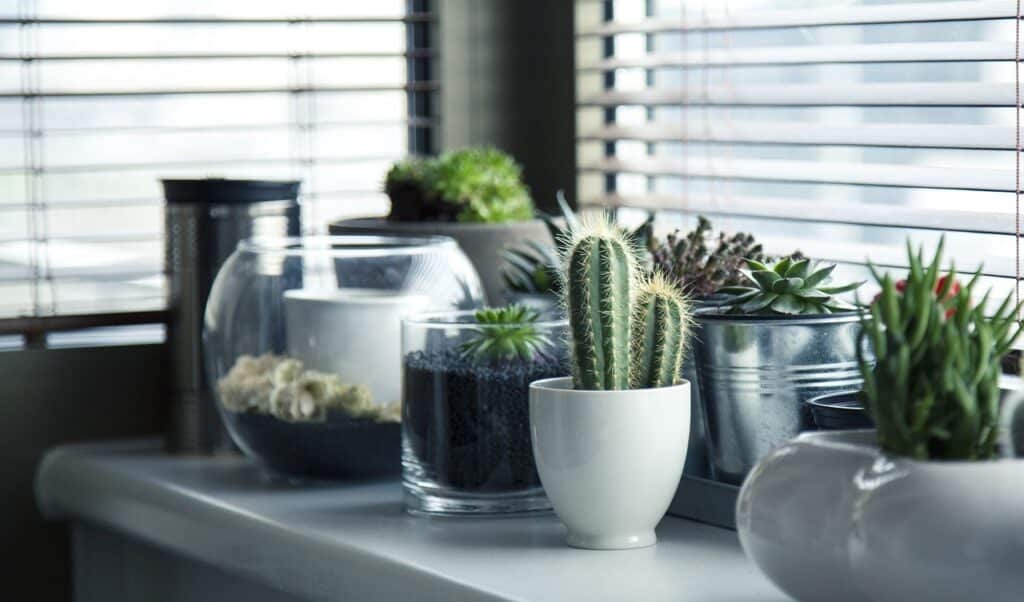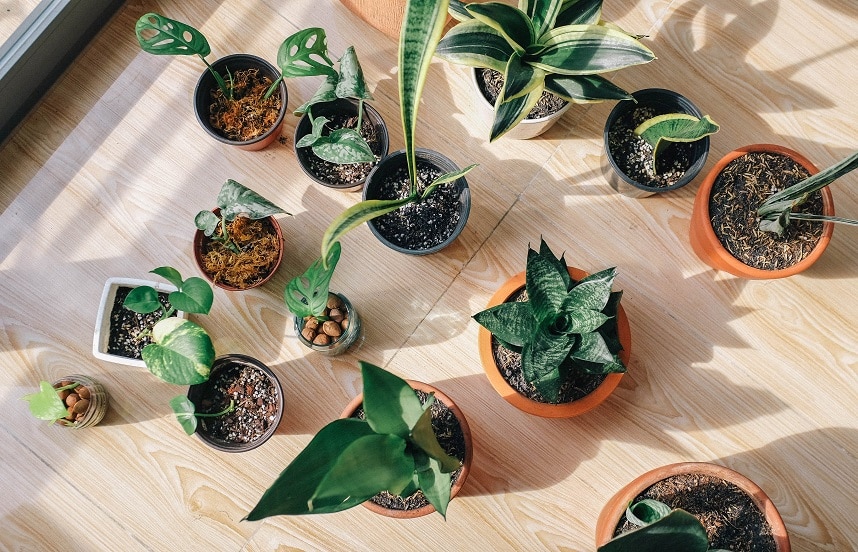Are you tired of dealing with excessive humidity in your home? Look no further! This article will introduce you to the best indoor plants that can help absorb humidity. With their natural ability to reduce moisture in the air, these plants create a pleasant living environment and provide a touch of vibrant greenery to your space. Whether you have a small apartment or a spacious house, these plants, such as peace lilies and spider plants, will be a great addition to your indoor decor. So, get ready to say goodbye to that sticky, muggy feeling and say hello to a more comfortable and refreshing atmosphere.

Understanding Humidity and Indoor Plants
Humidity refers to the amount of moisture in the air, and it plays a crucial role in indoor plants’ overall health and well-being. When it comes to indoor gardening, maintaining the optimal humidity level is essential for the success of your plants. High or low humidity can adversely affect their growth and overall health. Therefore, it becomes imperative to understand the effects of humidity on indoor plants and the role that plants themselves play in maintaining humidity levels.
Definition of humidity
Humidity is the measure of water vapor present in the air. It is usually expressed as a percentage and represents the amount of moisture in the atmosphere. High humidity means a higher moisture concentration in the air, while low humidity indicates a lower moisture concentration.
Effects of humidity on indoor plants
Humidity levels greatly affect how indoor plants thrive. High humidity can lead to the growth of mold, mildew, and other harmful pathogens, causing root rot and fungal diseases. On the other hand, low humidity can result in dehydration and wilting of plants, leading to stunted growth and an overall decline in their health.
Role of plants in maintaining humidity
Plants play a vital role in maintaining humidity levels in their surroundings. Through a process called transpiration, plants release moisture into the air. This moisture evaporates and increases the humidity in the surrounding environment. By absorbing moisture from the soil through their roots and releasing it through their leaves, plants naturally humidify the air, creating a more favorable environment for themselves and other organisms.
The Science Behind Plants Absorbing Humidity
Process of transpiration in plants
Transpiration is the process by which plants release water vapor into the air through the tiny openings, called stomata, found on the surfaces of their leaves. As the plant takes in water from the soil and up into its roots, it travels through the plant’s vascular system and eventually reaches the leaves. The water then evaporates through the stomata, increasing the humidity in the surrounding air. This process helps plants regulate their temperature and contributes significantly to maintaining the humidity levels in their immediate environment.
Plants as natural humidifiers
Plants act as natural humidifiers by absorbing and releasing moisture from their surroundings into the air. Through the process of transpiration, plants effectively add moisture to the drier indoor air, making it more comfortable for both the plants and the humans sharing the space. The more plants you have indoors, the higher the humidity levels will likely be, creating a healthier and more pleasant environment for all.

Importance of Humidity-Absorbing Indoor Plants
Benefits for human health
Besides contributing to plants’ overall health and well-being, humidity-absorbing indoor plants offer numerous benefits for human health. Adequate humidity levels can help prevent respiratory problems, reduce the risk of allergies, soothe dry skin, and alleviate symptoms of asthma and other respiratory conditions. Incorporating humidity-absorbing plants into your indoor space can enhance the air quality and create a more comfortable and healthier environment for you and your loved ones.
Improving home comfort
Indoor plants that absorb humidity can significantly improve the comfort levels in your home. By increasing the moisture content in the air, these plants help combat dryness, especially during the winter months when central heating systems often cause the air to become excessively dry. With the presence of humidity-absorbing plants, you can reduce the dryness in the air, making your home feel more pleasant and comfortable.
Contribution to plant health and growth
In addition to benefiting human health and improving home comfort, humidity-absorbing indoor plants also promote the health and growth of other plants in their vicinity. Plants require a certain level of humidity to thrive, and by maintaining suitable humidity levels, these plants create a more favorable growth environment for themselves and their neighboring plants. This makes them an excellent addition to any indoor garden or plant collection.
Factors to Consider When Choosing Indoor Plants for Humidity Absorption
When selecting indoor plants that absorb humidity, it is important to consider several factors to ensure their success in maintaining humidity levels effectively. These factors include the plant’s size and leaf surface area, the transpiration rate, and the conditions and location of the room where the plant will be placed.
Plant size and leaf surface area
Larger plants, boasting expansive leaf surfaces, absorb and release moisture. Varieties like Boston Ferns and Peace Lilies, with broad leaves, prove especially proficient in maintaining optimal humidity levels.
Rate of transpiration
The rate of transpiration, or the speed at which a plant releases moisture into the air, also plays a role in determining its effectiveness in absorbing humidity. Plants with a higher transpiration rate, such as English Ivy and Spider Plants, can help maintain higher humidity levels due to their more active moisture release.
Room conditions and plant location
The conditions and location of the room where the plant will be placed should also be considered. Different plants have varying humidity preferences, and it is important to choose plants that can thrive in the specific conditions of your home. Additionally, placing plants in rooms with high humidity, such as bathrooms and kitchens, can help maximize their ability to absorb moisture from the air.

English Ivy (Hedera helix)
Description and features
English Ivy, or Hedera helix, is a beloved houseplant with lush, dark green leaves and a distinctive lobed shape. Its versatility and climbing ability make it a captivating indoor addition.
Humidity absorption ability
English Ivy is an excellent indoor plant for absorbing humidity due to its dense foliage and large leaf surface area. It actively transpires, releasing moisture into the air and helping to increase humidity levels. With its efficient humidifying capabilities, English Ivy can create a more comfortable and healthier environment for you and your plants.
Care tips and considerations
For thriving English Ivy, offer bright, indirect light, consistently moist soil, and maintain 50-75°F (10-24°C) temperatures. Regular pruning controls growth; misting enhances humidity for optimal health.
Peace Lily (Spathiphyllum)
Description and features
The Peace Lily, scientifically known as Spathiphyllum, is another popular indoor plant celebrated for its elegant white flowers and glossy, deep green leaves. It is a low-maintenance plant that is ideal for beginners and fits well in any home decor. The Peace Lily is known for its air purifying qualities, removing toxins and improving indoor air quality.
Humidity absorption ability
Peace Lilies are excellent indoor plants for absorbing humidity. They have a large surface area on their broad leaves, enabling them to transfer moisture into the air effectively. Peace Lilies are particularly beneficial in dry environments as they can significantly increase the humidity levels around them.
Care tips and considerations
Peace Lilies thrive in bright, indirect light and prefer temperatures between 65 to 80 degrees Fahrenheit (18 to 27 degrees Celsius). They should be watered regularly, but not overwatered, as they prefer slightly moist soil. Misting the leaves periodically can help maintain humidity levels and prevent them from becoming too dry.
Spider Plant (Chlorophytum comosum)
Description and features
Chlorophytum comosum, or the Spider Plant, is favored for its graceful arching leaves, resembling spider legs. Easy to care for, it produces charming “spiderettes,” enhancing its aesthetic allure.
Humidity absorption ability
Spider Plants are proficient at absorbing humidity due to their abundant foliage and high transpiration rate. They actively release moisture into the air, helping maintain a higher humidity level in their surroundings. Their ability to thrive in a variety of conditions makes them an excellent choice for those seeking indoor plants for humidity absorption.
Care tips and considerations
Spider Plants prefer bright, indirect light but can tolerate lower light conditions. They should be watered regularly, and the soil kept slightly moist. Spider Plants appreciate occasional misting to increase humidity levels and prevent the tips of their leaves from drying out. They thrive in temperatures between 55 to 65 degrees Fahrenheit (13 to 18 degrees Celsius).
Boston Fern (Nephrolepis exaltata)
Description and features
The Boston Fern, scientifically known as Nephrolepis exaltata, is a classic indoor plant admired for its graceful, feathery fronds. It is one of the oldest houseplants and has remained a popular choice due to its appealing textures and ability to thrive in lower light conditions. Boston Ferns are often chosen as hanging plants or placed in elevated locations to showcase their vibrant green foliage.
Humidity absorption ability
Boston Ferns excel at humidity absorption, acting as natural humidifiers with lush fronds. Ideal for dry spaces, they enhance indoor moisture, fostering a comfortable environment during dry spells.
Care tips and considerations
Boston Ferns thrive in bright, indirect light but tolerate lower light conditions. They require consistently moist soil and high humidity levels to flourish. Regular misting and providing a tray of water nearby can help increase humidity levels around the plant. Boston Ferns prefer temperatures between 60 to 75 degrees Fahrenheit (16 to 24 degrees Celsius).
Areca Palm (Dypsis lutescens)
Description and features
Areca Palm (Dypsis lutescens) is a beloved indoor plant with tropical allure. Native to Madagascar, its graceful fronds and air-purifying qualities make it a top choice for plant enthusiasts.
Humidity absorption ability
Areca Palms, with lush foliage and active transpiration, excel at absorbing humidity. Vibrant green fronds release moisture, ideal for boosting indoor humidity levels.
Care tips and considerations
Areca Palms thrive in bright, indirect light and prefer to be kept in temperatures between 65 to 75 degrees Fahrenheit (18 to 24 degrees Celsius). They require well-draining soil and regular watering to keep the soil lightly moist. Misting the leaves regularly can help maintain humidity levels and prevent the fronds from drying out.
Conclusion
Mastering humidity’s role is crucial for indoor gardening success. Integrate humidity-absorbing plants for plant health, human well-being, and enhanced home comfort—a win-win for all.
Choose indoor plants wisely for humidity control. Consider size, transpiration rate, and room conditions. English Ivy, Peace Lily, Spider Plant, Boston Fern, and Areca Palm excel in maintaining optimal humidity.
Transform your indoor space with humidity-absorbing plants. Embrace a healthier, more comfortable environment while relishing the beauty and benefits of indoor plants. Elevate your well-being with nature’s touch!




